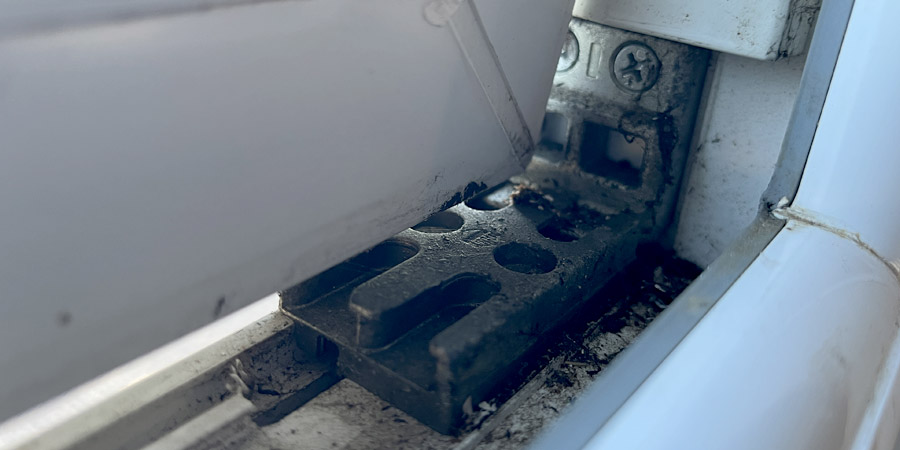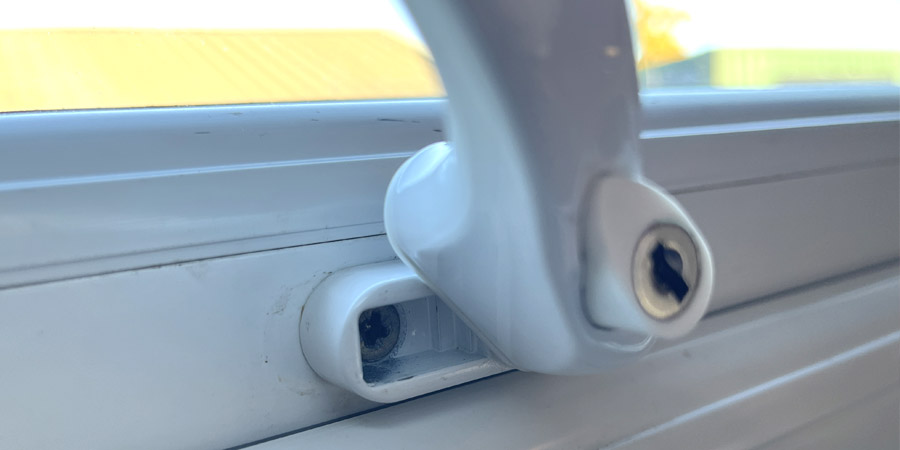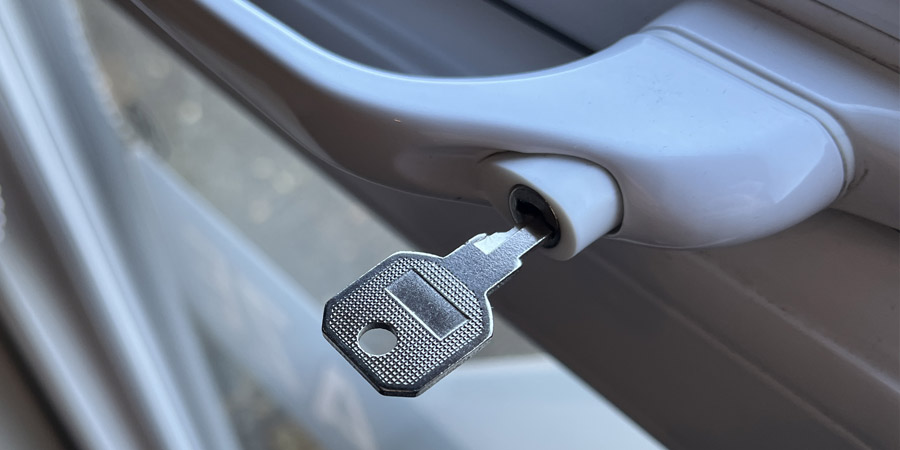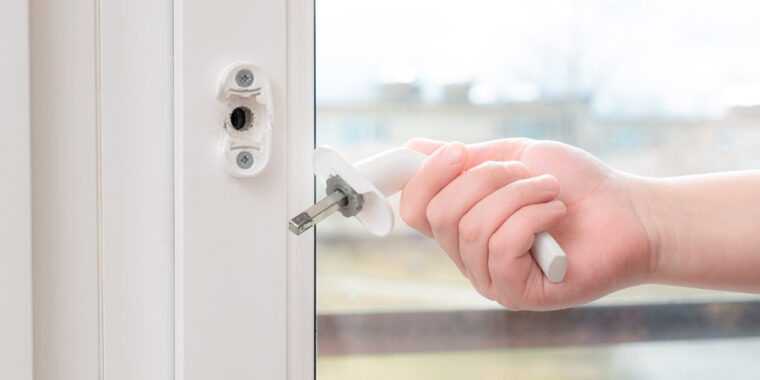As the handles of uPVC windows are the most used part, a broken window handle is often the most common problem encountered for homeowners.
Why do my window handles keep breaking?
uPVC window handles may break due to poor quality, manufacturing defects, excessive force during use, lack of maintenance, or exposure to harsh weather. Prevalent usage can also contribute to their deterioration and result in a broken window handle. However, there are several additional factors that can worsen problems over time.
Here, we outline the top 5 most common issues you might face with uPVC window handles, along with tips to either prevent or remedy them:

1. Misalignment or Warping:
uPVC doors or windows may experience misalignment or warping over time, resulting in the frame shifting or bending slightly. This can subsequently cause problems with closing or locking the window handle, ultimately impacting the security of the space.
TOP TIP:
Making adjustments to the hinges can realign the locking mechanism of the handle with the strike plate. Use a screwdriver to gently loosen the hinge (being careful not to remove the screws entirely) to lift or lower the door slightly to achieve the desired alignment. If realignment doesn’t solve the issue, promptly replace any misaligned parts.

2. Jammed or Stuck handles
Over time, dirt and debris can infiltrate the intricate mechanisms within a handle, hindering its smooth movement and making it harder to turn or engage. The internal components of the handle, such as springs or latches, can wear out or get damaged with prolonged use. This can affect the handle’s ability to move smoothly and cause it to jam
TOP TIP:
Our first tip would be to use compressed air to blow away any loose debris or dust from the handle and re-check its performance. If the problem still persists, apply a small amount of a suitable lock-lubricant or graphite powder to the joint of the handle. This can help loosen any debris or grit.
3. Rusted handle
Rust or corrosion is a frequent problem, particularly affecting handles exposed to damp conditions. When moisture infiltrates the handle and corrodes its operational components, it can impede the smooth turning action of the window handle. This restriction often leads to increased force being exerted by the operative when attempting to open the window. This results in the handle eventually snapping or breaking under the excessive force.
TOP TIP:
Use a rust dissolver or rust cleaner specifically designed for metal surfaces. Apply it as per the product instructions and wipe away any residue. After this, gently clean the handle using a soft brush or cloth to remove loose dirt and debris. Ensure you reach into crevices and tight spots.
4. Lock Cylinder Issues
Issues with the lock cylinder, like misalignment of pins or tumblers, can significantly hinder the proper functioning of the lock. When the key struggles to turn smoothly within the lock, it can render the operative unable to open the window at all. Fortunately, in most cases, this problem isn’t related to the handle mechanism and is relatively simple to resolve. It often requires addressing the internal components of the lock to ensure smooth and effective operation.
TOP TIP:
Begin by using a clean, dry toothbrush to delicately cleanse the lock, eliminating any accumulated dirt or debris. Following this, apply a small amount of a suitable lock-lubricant or graphite powder to the keyhole. Lastly, carefully insert the key into the lock and turn it several times. This can help distribute the lubricant and loosen any internal obstructions

5. Worn or Broken Keys
It is surprising how frequently the issue of a broken window hinge lies with the keys. Over time keys can wear down, making it challenging to lock or unlock the window.
TOP TIP:
Replacing a uPVC window key is generally a straightforward task that most individuals can manage without professional assistance. If you encounter any issues or are unsure about the replacement process, please get in touch with us today
Summary
The number one way to prevent any of these common issues is regular window maintenance. The absence of regular maintenance can significantly exacerbate issues and cause a broken window handle.
Dust, grime and moisture can accumulate, hindering the smooth operation of the handle and potentially leading to corrosion or rust. Without routine cleaning and maintenance, these problems can escalate, making the handle more susceptible to jamming, misalignment or even complete malfunction.
Maintenance neglect accelerates the degradation of the handle’s mechanisms, further compromising its effectiveness and longevity. Hence, consistent upkeep and cleaning are vital to prevent these problems and ensure the continued efficient operation of window handles.
